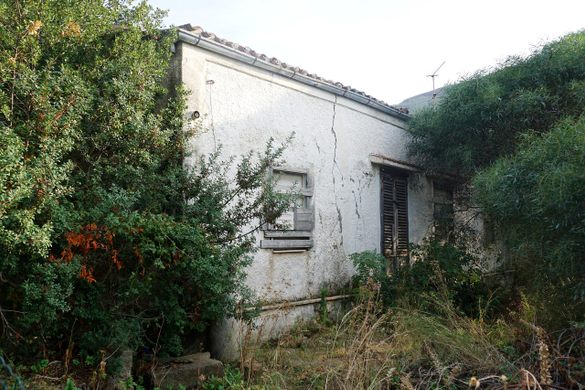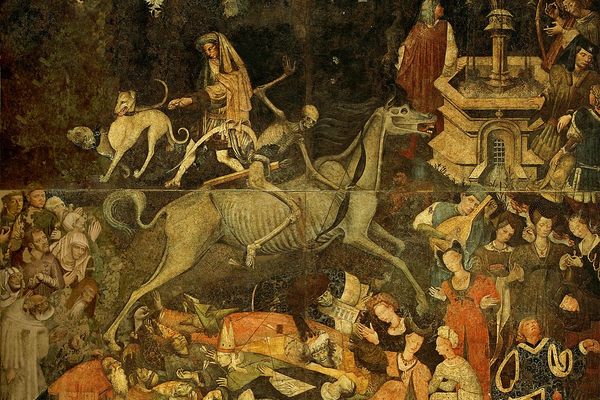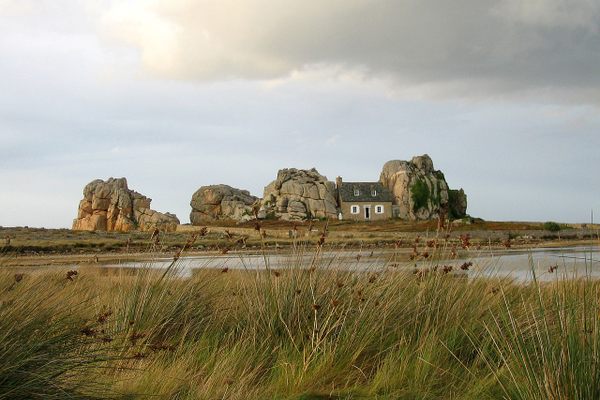Aleister Crowley's Abbey of Thelema
Where Aleister Crowley taught magick in "La Chambre Des Cauchemars," his "Chamber of Nightmares."
In 1919 Aleister Crowley, a mystic and occultist known as “The Great Beast,” had a revelation. He and his followers had to create a sanctuary, a holy place that would enable them to live through the Law of Thelema on a daily basis. This ideal temple, the Abbey of Thelema, would be an anti-monastery. The occultists settled in Cefalù, a small fishing town of the Sicilian coast.
Crowley is a major figure of modern occultism, and was already well known at the turn of the century. Famous for introducing sex and drugs as sacramental rituals into a complex syncretic system he called Magick, Crowley believed in finding one’s “True Will.” This principle is famously summed up the Law of Thelema: “Do what thou wilt shall be the whole of the Law.” Followers were to shirk societal norms and follow hedonistic impulses. The inherent individualism of Thelemic values were later to be absorbed into the sixties counter-culture, and would turn the British occultist into a pop icon, the Oscar Wilde of esoterica. However, a full fifty years before the lukewarm mysticism of the Age of Aquarius, Crowley was busy creating his occult temple in Sicily.
For a small amount of money, Crowley and his lover, Leah Hirsig, rented a one story house facing the Mediterranean sea. The common room was dedicated to ritual practices and held a scarlet “magick” circle marked with the sign of the major Thelemic deities. Crowley’s own bedroom, labeled by himself as “la chambre des cauchemars” (or “the room of nightmares”) was entirely hand-painted by the occultist with explicitly erotic frescos, hermaphroditic goblins, and vividly colored monsters. This private room was used for specific night initiations involving psychoactive drugs which gave terrifying cinematic life to this Bosch-like vision of hellish debauchery.
Crowley considered his temple a school of magick, and gave it an appropriately collegiate motto: “Collegium ad Spiritum Sanctum”–”A College towards the Holy Spirit.”
Crowley’s Cefalù period was one of the most prolific and happy of his life, even as he suffered from drug addiction and had to write the scandalous Diary of a Drug Fiend to finance his community. The growing interest in dark magic and the occult provided him with an ample student body (pun intended). But in 1922, the experience in monasticism ended when Raoul Loveday, a young disciple, tragically died from typhoid fever contracted from drinking spring water.
Crowley and his people were evicted by Mussolini’s regime in 1923. The dictator had no sympathy for pornographic art or mysticism. Once the Abbey closed, the villagers whitewashed the murals, which they somewhat correctly saw as demonic. This erased much of the history and work of Crowley in Cefalù. Afterwards, the house was considered haunted and remained abandoned until 1955, when Kenneth Anger, an experimental filmmaker and follower of Crowley, located the ruins of the villa and attempted (unsuccessfully) to restore the Chambre des Cauchemars.
The Abbey of Thelema is still there, a hidden monument of mysterious, magickal decay. Even as the old farmhouse crumbles down after decades of abandon, it’s still possible to visit and witness a few scant remains of the wall paintings, giving you a glimpse into Crowley’s transgressive cosmology.
As of 2010 the Abbey was up for sale for 1.5 Million Euro. There are currently no reported buyers.































Follow us on Twitter to get the latest on the world's hidden wonders.
Like us on Facebook to get the latest on the world's hidden wonders.
Follow us on Twitter Like us on Facebook